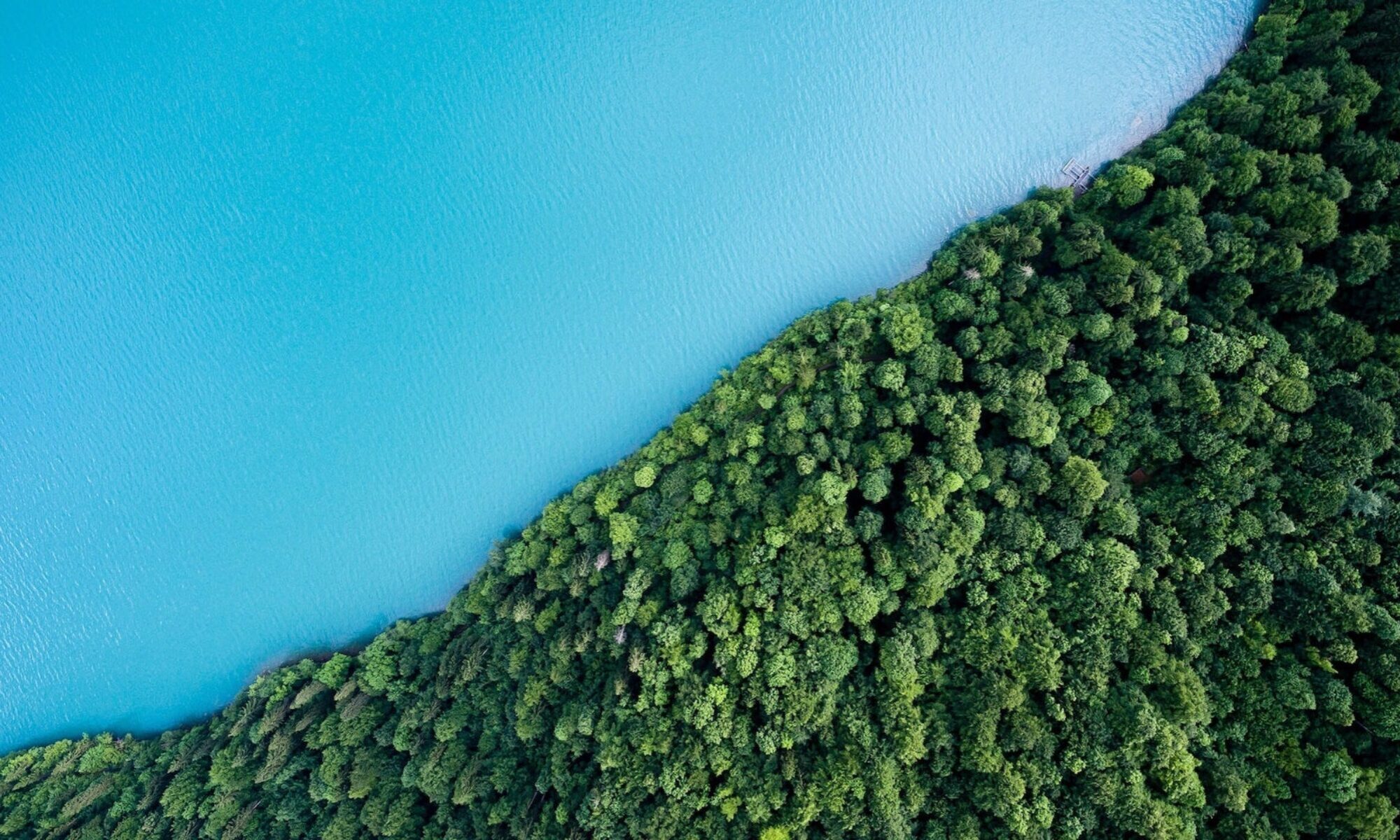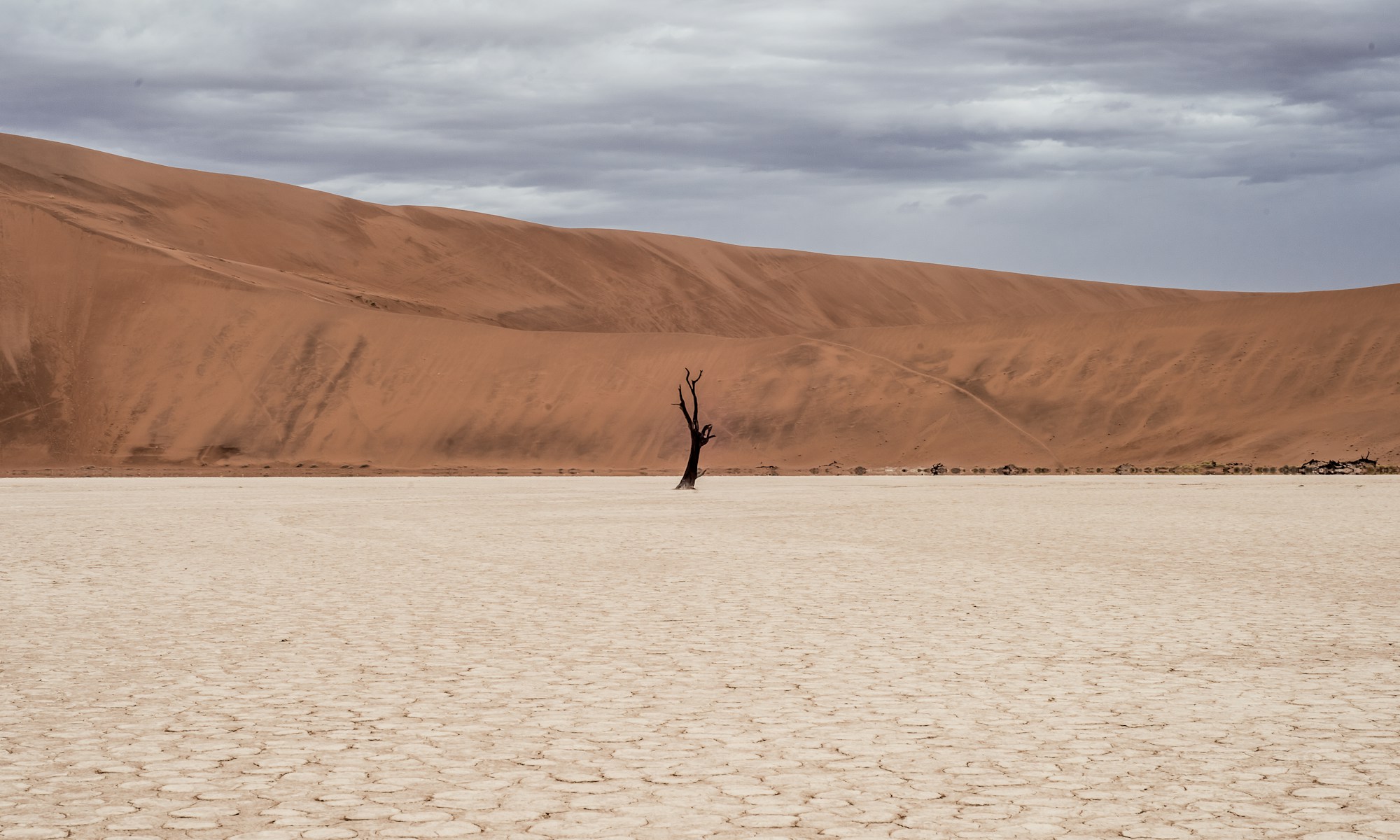4 March 2021 – by Eliana Stern
Introduction
Food is and always has been our most intimate connection to our natural environment—a source of security, spirituality, and sustenance. The emergence of modern agriculture is most commonly linked to the First Agricultural Revolution, marked by the domestication of grain in the Fertile Crescent, around 10,000 years ago. However, not only did this feat occur independently (and nearly simultaneously) in countless regions around the world, but human societies have been shaping and manipulating landscapes to produce food for a far longer period of history.
While the domestication of grain may have laid the foundation for our modern global food system—allowing for a rapid increase in centralized power, taxation, and even the beginnings of export agriculture—it was predated by a myriad of sustainable agricultural techniques that are still utilized by countless cultures around the world today, such as controlled burning or the “slash and burn” technique, pruning, and harvesting wild seeds and roots. Evidently, many histories have converged to establish the food systems we experience today. The Industrial Revolution catalyzed the mechanization of agriculture, agricultural processing, and distribution, while the discovery of the Haber-Bosch process and the subsequent Green Revolution of the mid-1900s allowed for the massive surge in large-scale monoculture and factory farming, thus establishing the chief characteristics of our current global food system.
But this food system is far from perfect. Despite the reality that roughly one-third of all food produced globally for human consumption (~1.3 billion tons/year)[1] ends up uneaten and decomposing in landfills, broad regions across the world still suffer from chronic hunger and food insecurity, a term defined by the United States Department of Agriculture (USDA) as “a lack of consistent access to enough food for an active, healthy life”[2]. Meanwhile, decades of agricultural intensification via monoculture and the use of synthetic fertilizers have led to crises of mass desertification, eutrophication, and groundwater depletion—challenges that disproportionately harm small farmers and marginalized groups rather than the large agricultural companies that instigated them. As the agricultural industry becomes more central to the discussion of climate change, due to both its use of fossil-fuel based fertilizers as well as the substantial methane footprint of Concentrated Animal Feeding Operations (CAFOs), the idea of sustainable or regenerative agriculture is emerging more in mainstream debate as a possible solution.
It is ironic that the principles and practices of groups that have historically been exploited and dismantled in the name of Western ‘progress’ may very well be the foundation for our path to salvation. In telling the story of one such group, the Navajo Nation, I hope to call attention to the central role that food plays in the conversation of environmental justice, and the necessity of dismantling historical structures of colonialism in order to build a sustainable future.
A Brief History of the Navajo Nation
The largest Native American reservation in the United States (US), the Navajo Nation spans about 16 million acres, or ~25,000 square miles, and extends into the states of Arizona, New Mexico, and Utah.[3] Despite representing one of the first and only instances in history during which the US government allowed indigenous people to return to their ancestral land, the history of Navajo sovereignty is long and rife with violence.
In 1864, after the US defeated Mexico and gained control over the vast territory recognized today as California and the Southwest United States, Colonel Kit Carson established a “scorched earth policy”[4]: an order to burn all Navajo homes and crops, and to steal or kill their remaining livestock. Starved and outnumbered, members of the Navajo tribe were then brutally removed from their ancestral lands and forced to march at gunpoint in what is known as “The LonThe Navajo Nation: A Case Study on Food Colonialism and Environmental Justiceg Walk”: a series of 53 forced marches over the course of two years from Arizona to Bosque Redondo, New Mexico. The initial 18-day, 300-mile journey led to the deaths of at least 200 Navajo men, women, and children[5]. It is worthy to note that while “The Long Walk” consisted of seven different paths and at least 50 separate groups, the eventual journey of the Navajo tribe back to their homeland merged together to forge one large group that was said to trail for ten miles.[6]
Following four long years of imprisonment, a treaty signed with the US in 1868 permitted remaining Navajos to return to a designated portion of their ancestral land. The treaty declared Navajo Nation as independent from the US, and granted its population 3.5 million acres which, after the signing of a series of other treaties from 1878-1991, expanded to the 16 million acres Navajo Nation stretches today[7].The Navajo people call themselves Diné, which translates literally to “the people”[8]. Their independent government is broken down into executive, judicial, and legislative branches, all of which are largely informed by Diné Bibee Nahaz’aanii Bitsésiléi, or Navajo Fundamental Law—principles that have guided the tribe since long before colonization. To quote the Diné Policy Institute, “Earth, sky, plants and all living things in existence live according to Diné Bibee Nahaz’aanii Bitsésiléi… [which calls] for the appropriate respect, reverence and protocol of offering for the accessing of natural elements, including our food sources.”[9]
The Remnants of Colonialism and the Makings of a Modern Day Food Desert
At present, there are a total of 13 grocery stores on the Navajo Nation[10]. Despite being roughly the size of West Virginia and home to a population of 174,000 people, the availability of nutritious food on the Navajo Nation is rare. The average resident must drive upwards of three hours to reach the nearest grocery store[11]. Due to the difficulty this transportation barrier presents, many residents fill most of their caloric needs at local convenience stores or trading posts, which are filled with highly-processed, low-nutrition foods like chips and soda. The acute inaccessibility to nutritious food on the Navajo Nation also applies to traditional Navajo foods—a disconnect which is compounded by the historical loss of knowledge on how to grow and harvest traditional Navajo crops, as well as the difficulty of procuring both land and water on the Navajo Nation due to the complex web of tribal and federal land use policies.[12]
These substantial barriers to accessing healthy food, combined with high rates of unemployment and a predominance of low-wage jobs has led to a massive epidemic of food insecurity on the Navajo Nation. Whereas the Diné historically lived off the land using sustainable subsistence lifestyles, “decades of assimilation, forced relocation and dependence on federal food distribution programs”[13] have rendered the Nation a food desert, which the USDA describes as a region which “often [features] large proportions of households with low incomes, inadequate access to transportation, and a limited number of food retailers providing fresh produce and healthy groceries for affordable prices”[14]. As a result, in 2015 approximately 26,000 Navajo people (or 22% of the total population) were reported to be living with diabetes, and another 75,000 residents reported as prediabetic[15]. Obesity rates ranged in different regions of the Nation from 23-60%.[16]
Aside from the implications these conditions have for public health and equity in the US, the Navajo Nation’s food system is central to the discussion of environmental justice due to its clear association with colonialist frameworks, as well as the current exacerbating effects imposed by climate change. In the discussion of justice, terminology holds utmost significance, particularly in determining collective understanding and attitude towards the injustice at hand. It is important to note, then, that the term food desert contains appreciable flaws in defining the systems of environmental injustice on the Navajo Nation and elsewhere. Whilst the term implies that a region with “inadequate access to transportation, and a limited number of food retailers providing fresh produce”[17] arises as such in its natural state of being—deserts, after all, are naturally-occurring biomes around the world—it fails to encompass the very intentional history of invasion, displacement, segregation, and unjust zoning laws that have led to the existence of food deserts today.
Instead, I will subscribe to the term food apartheid, coined by physical therapist and food activist Karen Washington. The word apartheid references the government-sanctioned racial segregation in South Africa, and is therefore used to acknowledge the various intentional actions, decisions, and policies that have led to the inaccessibility to high-quality, nutritious food in marginalized communities. As Washington affirms,
“food apartheid looks at the whole food system, along with race, geography, faith, and economics. You say food apartheid and you get to the root cause of some of the problems around the food system. It brings in hunger and poverty. It brings us to the more important question: What are some of the social inequalities that you see, and what are you doing to erase some of the injustices?”[18]
Part Three: Collective Healing and Foundations for an Equitable Food System
After clarifying her definition of food apartheid, Washington goes on to discuss the path to a possible solution: the concept of food sovereignty. Washington notes that the term “was really founded by indigenous people in Central and South America when they were fighting for governance”. Specifically,
“the organization Via Campesina coined the term ‘food sovereignty’. They were fighting for land ownership and they were fighting for resiliency, so we should make sure that we pay respect to those indigenous people who have been fighting for so long.”[19]
The Diné Policy Institute has since defined food sovereignty as,
“the right of people to define their own policies and strategies for sustainable production, distribution, and consumption of food, with respect to Diné culture, philosophy, and values, and is considered to be a precondition for food security on the Navajo Nation. Diné Food Sovereignty empowers Diné people by putting the Diné people, cooks, farmers, ranchers, hunters, and wild food collectors at the center of decision-making on policies, strategies, and natural resource management.”[20]
While food sovereignty may very well seem to be a logically fixed component of Navajo sovereignty, underlying federal laws and allocation of resources have prevented this concept from becoming a reality. However, recent external forces—namely, the Coronavirus pandemic and the increasing stressors of climate change on drought conditions and soil health—have led to a renaissance of traditional Navajo farming on the Nation, and a subsequent push for greater Navajo Food Sovereignty.
Tyrone Thompson, a Navajo farmer determined to fuel a movement of food sovereignty on the Navajo Nation, explains that
“as we see the shelves [of grocery stores] emptying of food and toilet paper we kind of reconnect to our roots. Some of the tools that were given by our elders and our ancestors—our planting stick and our steering sticks—those are our weapons against hunger and poverty and sickness”[21].
Thompson has since taken to social media in order to spread the knowledge of traditional Navajo farming techniques, making it easier and more accessible for Navajo residents to yield their own fresh fruits and vegetables. This movement, spearheaded by Thompson and other Navajo leaders and community leaders, works to both fortify the security and independence of the Navajo Nation through a restoration of their traditional food sources, as well as to reconnect a new generation of Navajo residents to the cultural roots and practices that they have historically been separated from. Thus, food sovereignty is a tool to jointly combat both hunger and intergenerational trauma.
Similarly, Cynthia Wilson, Traditional Foods Program Director of the nonprofit organization Utah Diné Bikéyah, launched Seeds and Sheep in the spring of 2020. This is a program with the goal of getting drought-resistant seeds and female ewes (and potentially even lambs) into the hands of Navajo residents interested in returning to a subsistence lifestyle. In May, Wilson wrote that
“launching the ‘Seeds and Sheep’ program is an act of food justice to show the Earth and universe that we are shifting back to cultural solutions to address the COVID-19 pandemic, climate crisis, and oppression on our food systems…colonization, cultural appropriation, and assimilation has put our subsistent life ways into dormancy… restoring our flocks of sheep and expanding seed sovereignty is a way to reclaim our self-sufficient food systems, economy and connection to the land.”[22]
Wilson’s Seeds and Sheep initiative points to Navajo Food Sovereignty as a possible path towards a food system in Navajo Nation that is equitable, resilient to climate change, and incorporates both intergenerational healing and reclamation of cultural values. Beyond that, it indicates an encouraging grassroots movement of reconnection with sustainable practices and the utilization of traditional ecological knowledge (TEK) in order to combat systemic environmental injustice.
Conclusion
Today’s global food system has a long way to go in order to meet its foremost goals of worldwide equity, sustainability, and resilience. With climate change wreaking havoc on the agricultural industry due to rising temperatures and subsequent regional droughts or floods, it is crucial that we make a concerted effort to reinforce our methods of food production in a way that is both adaptive to our changing climate, and has minimal negative environmental effects such as desertification, eutrophication, and excessive greenhouse gas emissions. As new innovations in agriculture such as hydroponics and indoor farming gain more popularity and exploration in public discourse, I believe that we must give at least the same amount of attention and resources to restoring some of the traditional practices in sustainable agriculture that have been utilized effectively for millennia—including crop rotation, cover cropping, farming biodiversity, integrated pest management, and more.
With respect to the Navajo Nation, the greatest tools to counter the current system of food apartheid may simply be the vast stores of TEK and sustainable farming techniques that have been denoted in Diné Bibee Nahaz’aanii Bitsésiléi for generations. As Cynthia Wilson wrote, “the resources are already in our communities, and now the pandemic is showing us the need to rely on our culture more than ever”[23].
As climate stressors inevitably increase around the world in the coming years, challenges to small-scale agriculture such as increased drought or flooding will likely prompt more and more instances of climate change-induced migration, both domestically and potentially even internationally. Thus, it is important to view the food system in Navajo Nation not as an isolated circumstance, but as a representation of what may soon come on a much larger scale. It is imperative that we not only work to innovate and refashion our current agricultural practices, but also look to the vast quantities of indigenous knowledge in agroecology and sustainable agriculture in hopes of establishing a new global food system based on equity, cooperation, and longevity.

Eliana is Earth Refuge’s Archivist and sophomore at Stanford University majoring in Earth Systems, with minors in Arabic and Creative Writing. While on campus, Eliana could often be found planting, harvesting, and planning community events at the O’Donohue Family Stanford Educational Farm, where she serves as Vice President of Stanford RooTS.
References
[1] FAO. 2011. Global food losses and food waste – Extent, causes and prevention. Rome
[2] “Definitions of Food Security.” USDA ERS – Definitions of Food Security, www.ers.usda.gov/topics/food-nutrition-assistance/food-security-in-the-us/definitions-of-food-security.aspx.
[3] “Navajo Nation.” Navajo Area, Indian Health Service – The Federal Health Program for American Indians and Alaska Natives, www.ihs.gov/navajo/navajonation.
[4] Indian Health Service, “Navajo Nation.”
[5] “Navajo Sovereignty Day.” Navajo Code Talkers, 1 Oct. 2014, navajocodetalkers.org/navajo-sovereignty-day/.
[6] Navajo Code Talkers, “Navajo Sovereignty Day.”
[7] Navajo Code Talkers, “Navajo Sovereignty Day.”
[8] Indian Health Service, “Navajo Nation.”
[9] “Good Laws, Good Food: Putting Food Policy to Work in the Navajo Nation.” Navajo Food Policy Toolkit, The Harvard Law School Food Law and Policy Clinic, May 2015, www.navajohs.org/uploads/PressRelease/fb31f5d091d74bac8e18ac02e46455e6/Navajo_Food_Policy_Toolkit_May_2015.pdf.
[10] Kreider, Matilda. “13 Grocery Stores: The Navajo Nation Is a Food Desert.” Planet Forward, 10 Dec. 2019, www.planetforward.org/idea/13-grocery-stores-the-navajo-nation-is-a-food-desert.
[11] Kreider, “13 Grocery Stores.”
[12] “Diné Food Sovereignty: A Report on the Navajo Nation Food System and the Case to Rebuild a Self-Sufficient Food System for the Diné People.” Diné Food Sovereignty Report, Diné Policy Institute, Apr. 2014, www.dinecollege.edu/wp-content/uploads/2018/04/dpi-food-sovereignty-report.pdf.
[13] Morales, Laurel. “Navajo Nation Sees Farming Renaissance During Coronavirus Pandemic.” NPR, NPR, 28 July 2020, www.npr.org/2020/07/28/895735482/navajo-nation-sees-farming-renaissance-during-coronavirus-pandemic.
[14] Dutko, Paula, et al. “Characteristics and Influential Factors of Food Deserts.” Economic Research Service – USDA, USDA, Aug. 2012, www.ers.usda.gov/webdocs/publications/45014/30940_err140.pdf.
[15] Navajo Food Policy Toolkit, “Good Laws, Good Food.”
[16] Navajo Food Policy Toolkit, “Good Laws, Good Food.”
[17] Dutko et al. “Characteristics and Influential Factors of Food Deserts.”
[18] Brones, Anna. “Karen Washington: It’s Not a Food Desert, It’s Food Apartheid.” Guernica, 10 May 2018, www.guernicamag.com/karen-washington-its-not-a-food-desert-its-food-apartheid/.
[19] Brones, “Karen Washington.”
[20] Diné Policy Institute, “Diné Food Sovereignty.”
[21] Morales, “Navajo Nation Sees Farming Renaissance During Coronavirus Pandemic.”
[22] Wilson, Cynthia. “‘Seeds and Sheep’ Program in Response to Covid.” Utah Dine Bikeyah, 8 May 2020, utahdinebikeyah.org/seeds-and-sheep-program-in-response-to-covid/.
[23] Podmore, Zak. “Seeds and Sheep Program Is Distributing Drought-Resistant Seeds to Native American Families in San Juan County.” The Salt Lake Tribune, 14 May 2020, www.sltrib.com/news/2020/05/14/seeds-sheep-program-is/.












